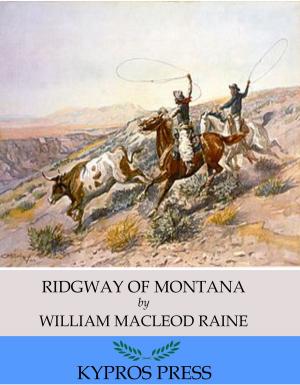Pickett's Charge: Account of the Charge from "Life of General George G. Meade"
Nonfiction, History, Americas, United States, Civil War Period (1850-1877), Military, 19th Century| Author: | Isaac R. Pennypacker | ISBN: | 9781619823167 |
| Publisher: | Charles River Editors | Publication: | February 15, 2012 |
| Imprint: | Language: | English |
| Author: | Isaac R. Pennypacker |
| ISBN: | 9781619823167 |
| Publisher: | Charles River Editors |
| Publication: | February 15, 2012 |
| Imprint: | |
| Language: | English |
The most famous attack of the Civil War was also one of its most flawed and deadly. Having been unable to break the Army of the Potomacs lines on the left and right flank during Day 2 of the Battle of Gettysburg, Lee decided to make a thrust at the center of the Unions line with about 15,000 men spread out over three divisions. Though it is now known as Picketts Charge, named after division commander George Pickett, the assignment for the charge was given to General James Longstreet, whose 1st Corps included Picketts division. Longstreet had serious misgivings about Lees plan and tried futilely to talk him out of it. Lees decision necessitated a heavy artillery bombardment of the Union line and attempting to knock out the Unions own artillery before beginning the charge that would cover nearly a mile of open space from Seminary Ridge to the Union line on Cemetery Ridge. Lee tasked Edward Porter Alexander, in charge of the 1st Corps guns, to conduct the artillery bombardment. What resulted was the largest sustained bombardment of the Civil War, with over 150 Confederate cannons across the line firing incessantly at the Union line for nearly 2 hours. Unfortunately for Porter Alexander and the Confederates, the sheer number of cannons belched so much smoke that they had trouble gauging how effective the shells were. As it turned out, most of the artillery was overshooting the target, landing in the rear of the Union line. Reluctant to order the charge, Longstreet commanded Porter Alexander to order the timing for the charge. As Longstreet and Alexander anticipated, the charge was an utter disaster, incurring a nearly 50% casualty rate and failing to break the Union line.Porter Alexander would later write at length about Gettysburg in his memoirs and in letters to the Southern Historical Society, providing his analysis and opinions. In particular, he was critical of General Lee for ordering Picketts Charge, calling it Lees worst decision of the war. Longstreet would also criticize Lee for Picketts Charge in his memoirs as well. This account of the doomed Picketts Charge comes from Isaac R. Pennypackers book Life of General George G. Meade and includes pictures of the important commanders of the battle.
The most famous attack of the Civil War was also one of its most flawed and deadly. Having been unable to break the Army of the Potomacs lines on the left and right flank during Day 2 of the Battle of Gettysburg, Lee decided to make a thrust at the center of the Unions line with about 15,000 men spread out over three divisions. Though it is now known as Picketts Charge, named after division commander George Pickett, the assignment for the charge was given to General James Longstreet, whose 1st Corps included Picketts division. Longstreet had serious misgivings about Lees plan and tried futilely to talk him out of it. Lees decision necessitated a heavy artillery bombardment of the Union line and attempting to knock out the Unions own artillery before beginning the charge that would cover nearly a mile of open space from Seminary Ridge to the Union line on Cemetery Ridge. Lee tasked Edward Porter Alexander, in charge of the 1st Corps guns, to conduct the artillery bombardment. What resulted was the largest sustained bombardment of the Civil War, with over 150 Confederate cannons across the line firing incessantly at the Union line for nearly 2 hours. Unfortunately for Porter Alexander and the Confederates, the sheer number of cannons belched so much smoke that they had trouble gauging how effective the shells were. As it turned out, most of the artillery was overshooting the target, landing in the rear of the Union line. Reluctant to order the charge, Longstreet commanded Porter Alexander to order the timing for the charge. As Longstreet and Alexander anticipated, the charge was an utter disaster, incurring a nearly 50% casualty rate and failing to break the Union line.Porter Alexander would later write at length about Gettysburg in his memoirs and in letters to the Southern Historical Society, providing his analysis and opinions. In particular, he was critical of General Lee for ordering Picketts Charge, calling it Lees worst decision of the war. Longstreet would also criticize Lee for Picketts Charge in his memoirs as well. This account of the doomed Picketts Charge comes from Isaac R. Pennypackers book Life of General George G. Meade and includes pictures of the important commanders of the battle.















